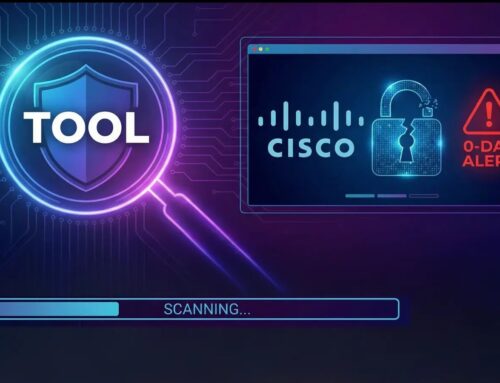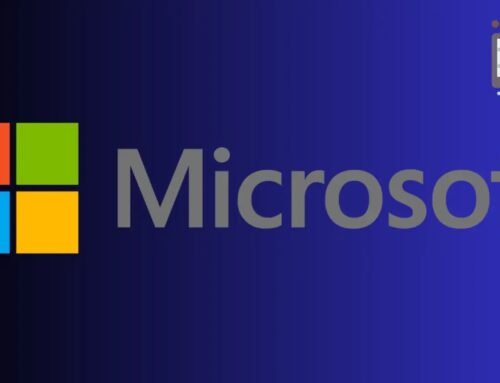
Threat Actors Weaponize Malicious Gopackages to Deliver Obfuscated Remote Payloads
The Silent Menace: Threat Actors Weaponizing Malicious Go Packages
Supply chain attacks represent a critical and escalating threat in the cybersecurity landscape. Unlike traditional direct attacks, these sophisticated campaigns target vulnerabilities within an organization’s software component suppliers, exploiting trust relationships to compromise downstream users. A recent discovery by cybersecurity researchers has brought to light a concerning evolution in this threat vector: threat actors are now leveraging the decentralized nature of the Go module system to distribute highly obfuscated malicious packages, posing a significant risk to Linux build servers and the entire software development lifecycle.
This development underscores the urgent need for robust supply chain security practices and heightened vigilance within the Go ecosystem. As an expert cybersecurity analyst, it’s clear that understanding the mechanics of these attacks is paramount to effective defense.
Anatomy of the Go Package Supply Chain Attack
The campaign, detailed by cybersecurity researchers, involves eleven malicious packages meticulously crafted to appear legitimate. These malicious gopackages employ advanced obfuscation techniques, making detection challenging for conventional security tools. The primary objective is to deliver second-stage remote payloads, effectively establishing a persistent foothold within compromised environments.
The attackers exploit the inherent trust in software dependencies. When developers incorporate these seemingly benign packages into their projects, they inadvertently introduce malicious code into their build environments. This can lead to the compromise of sensitive data, intellectual property, or even enable further attacks within the organization’s infrastructure.
Advanced Obfuscation and Payload Delivery
A key characteristic of this campaign is the sophisticated use of obfuscation. Threat actors employ various techniques to hide their malicious intent, making static and dynamic analysis difficult. These methods can include:
- Code packing and encryption: Hiding the true nature of the payload until runtime.
- Anti-analysis techniques: Detecting and evading sandboxes or debugging environments.
- Polymorphic code: Constantly changing the code’s appearance to bypass signature-based detection.
- Highly decentralized distribution: Leveraging the widespread use of Go modules, making it harder to track and eradicate all instances of the malicious code.
Once activated, these malicious packages download and execute second-stage payloads, often remote access trojans (RATs) or custom malware designed for data exfiltration, reconnaissance, or establishing persistent backdoors. The impact on Linux build servers is particularly concerning, as these systems often have elevated privileges and access to source code, credentials, and build artifacts, making them high-value targets for adversaries.
Targeting the Go Ecosystem: A Growing Trend
The choice of the Go ecosystem as a target is strategic. Go (Golang) has seen a significant increase in adoption for cloud-native applications, microservices, and backend development due to its performance, concurrency features, and ease of deployment. This growing popularity makes the Go supply chain an attractive target for threat actors seeking to maximize their reach and impact.
The decentralized nature of Go’s module system, while advantageous for development, also presents a challenge for security. Unlike centralized repositories that might have stricter vetting processes, the ease with which packages can be published and integrated requires developers to exercise extreme caution and implement robust security measures.
Remediation Actions for Go Developers and Organizations
Defending against these sophisticated supply chain attacks requires a multi-layered approach. Organizations and individual developers must adopt proactive security postures to mitigate the risks posed by malicious Go packages.
- Software Bill of Materials (SBOMs): Generate and maintain comprehensive SBOMs for all deployed applications. An accurate SBOM provides transparency into all components, including third-party dependencies, allowing for quick identification of vulnerable or malicious packages.
- Dependency Scanning and Analysis: Implement automated tools to scan and analyze all Go dependencies for known vulnerabilities and suspicious behavior. This includes both direct and transitive dependencies.
- Source Code Review: Conduct thorough manual and automated code reviews, especially for new or less-known packages before integration. Pay close attention to calls to external resources, unusual file system access, or network communications.
- Supply Chain Security Platforms: Utilize dedicated supply chain security platforms that can monitor and validate the integrity of your software dependencies from development to deployment.
- Least Privilege Principle: Apply the principle of least privilege to your build servers. Restrict network access, limit user permissions, and segregate environments to minimize the blast radius of a potential compromise.
- Regular Updates and Patching: Keep all development tools, operating systems, and Go-related software up-to-date to patch known vulnerabilities that threat actors might exploit.
- Network Monitoring: Implement robust network monitoring solutions to detect unusual outbound connections or communication patterns originating from build servers or application instances.
- Secure Development Practices: Foster a culture of security within development teams, emphasizing secure coding practices and awareness of supply chain risks.
Recommended Tools for Supply Chain Security
Implementing the above remediation actions can be significantly aided by leveraging specialized security tools. Here’s a selection of categories and examples:
| Tool Category | Purpose | Examples & Links |
|---|---|---|
| Dependency Scanners | Identifies known vulnerabilities in open-source dependencies. | OWASP Dependency-Check GitHub Dependabot |
| Software Composition Analysis (SCA) | Automates open-source component analysis for security, license compliance, and quality. | Synopsys Black Duck Sonatype Nexus IQ |
| Static Application Security Testing (SAST) | Analyzes source code for security vulnerabilities. | golangci-lint (for Go) Checkmarx SAST |
| Dynamic Application Security Testing (DAST) | Tests applications in their running state for vulnerabilities. | OWASP ZAP Burp Suite |
| SBOM Generators | Creates a complete list of software components and dependencies. | SPDX tools CycloneDX tools |
Key Takeaways and Future Outlook
The weaponization of malicious Go packages marks a significant escalation in supply chain attack methodologies. Threat actors are demonstrating increased sophistication in their obfuscation techniques and a clear understanding of modern development ecosystems. This campaign serves as a stark reminder that:
- Trusting external dependencies blindly is no longer viable.
- Proactive security measures, including comprehensive scanning and real-time monitoring, are indispensable.
- The security of the software supply chain is a shared responsibility, extending from individual developers to large enterprises.
As the Go ecosystem continues to grow, so too will the appeal for malicious actors. Organizations and developers must prioritize supply chain security, integrating it as a fundamental component of their development and deployment pipelines to safeguard against these evolving and insidious threats.





